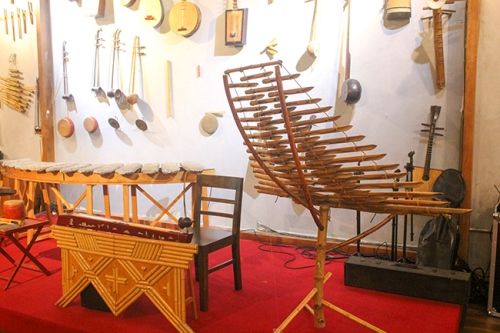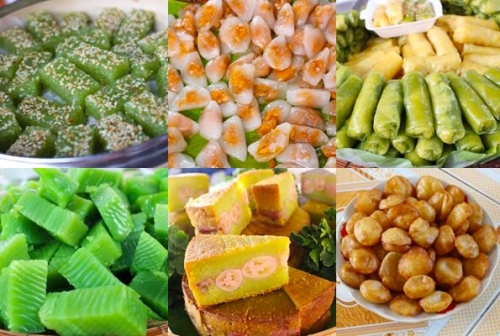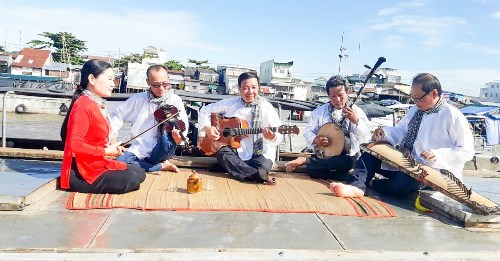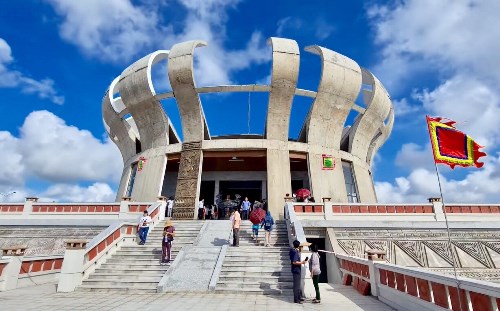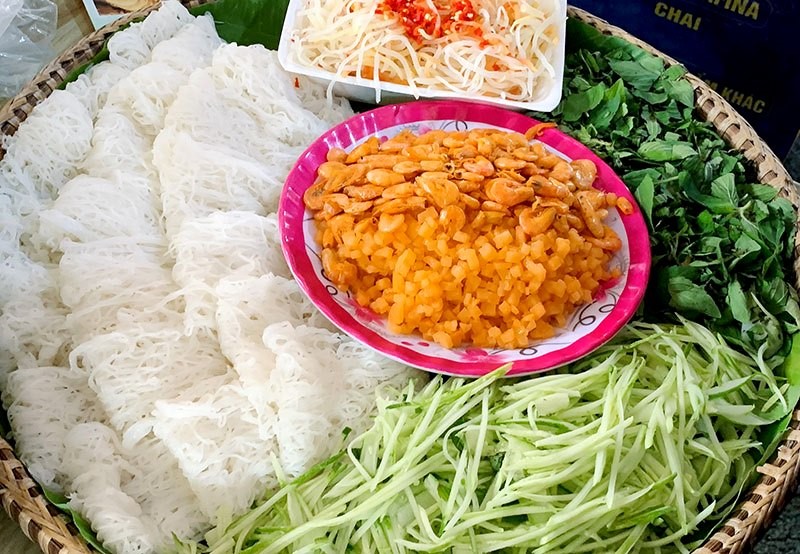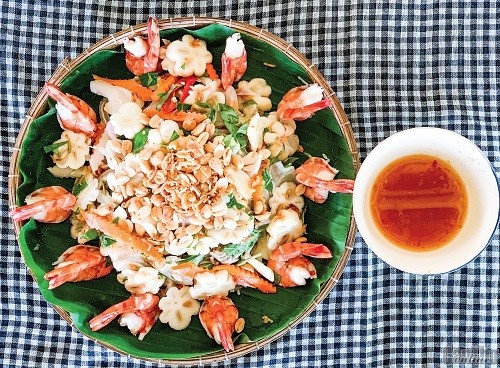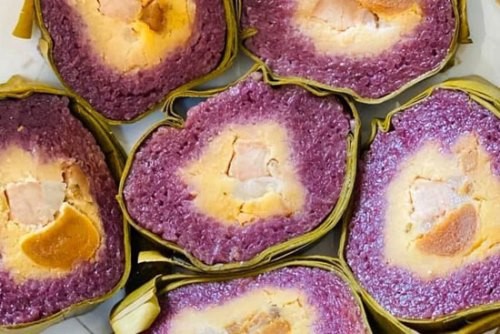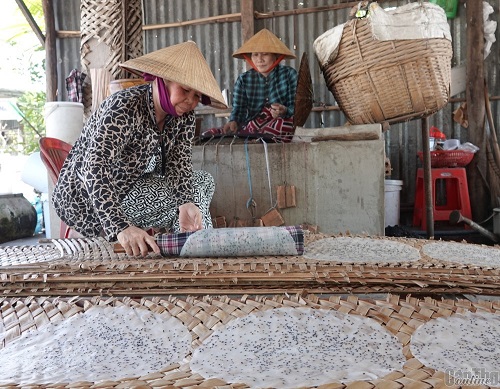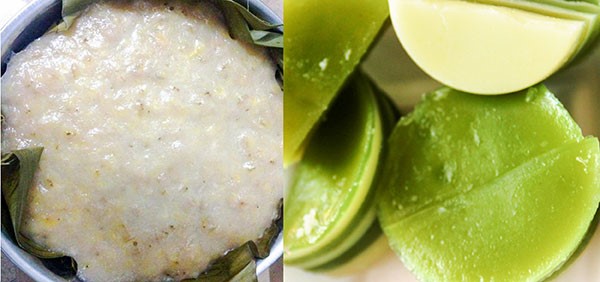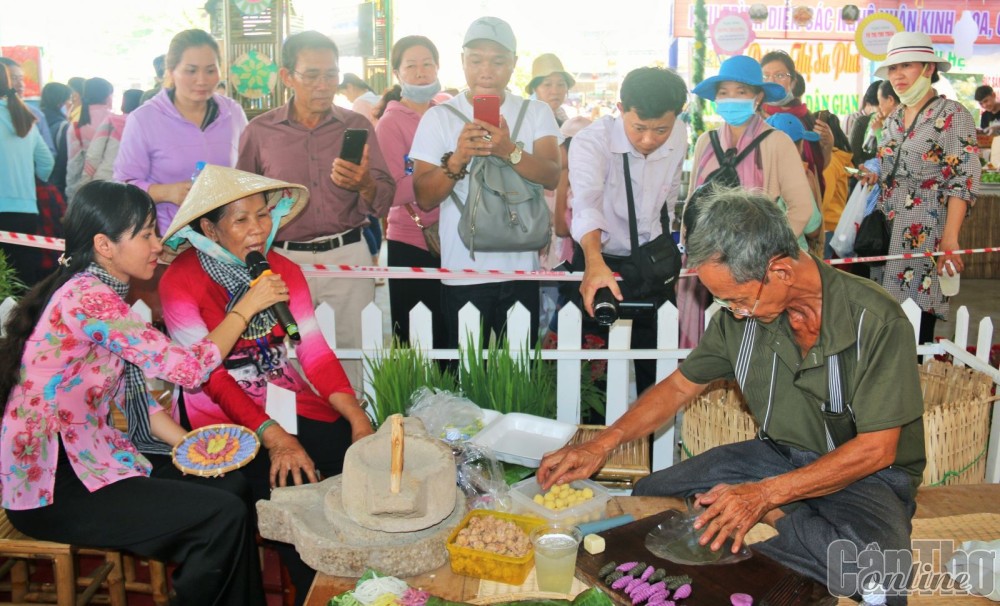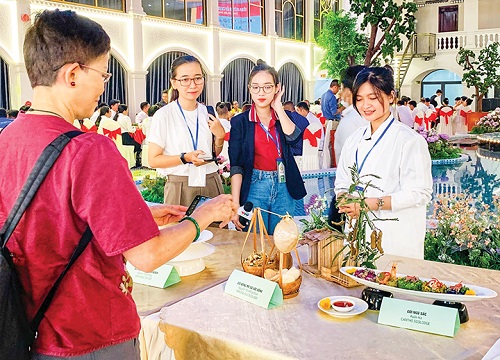
Imprints of the flower seasons
Last September, the Can Tho Culinary Club was launched with 60 members including chefs, businesses, and culinary researchers. This is a socio-occupational organization under the Can Tho City Tourism Association, aimed at being a bridge for chefs and culinary enthusiasts to exchange, share, and creatively develop dishes based on local resources. Through this, the club aims to gradually position and build brands for Can Tho cuisine.
The Can Tho Culinary Club made an impression at its launch event, organizing an activity with the theme "Seasons of Flowers - Seasons of Deliciousness". Using local ingredients, the chefs prepared 12 dishes featuring flowers, with each dish beautifully presented and accompanied by the chefs' emotional and creative sharing about the hometown specialties. Ms. Tran Thi Hoa, creator of the “ca xiu bach hoa” (mollusk and hundred flowers) hotpot, said: "I accidentally learned about ca xiu (a mollusk living in brackish water areas in Ha Tien, Kien Giang) which has a unique taste and is suitable for many delicious dishes; I created the “ca xiu bach hoa” hotpot. Ca xiu makes a sweet, light broth. The “bach hoa” here refers to edible flower species in our Mekong Delta region, including a special species called “mo qua” flower that is only available one season each year and few people now use."
The culinary culture of the Mekong Delta region is often closely linked to daily life rhythms, with different foods for each season. Many dishes can only be enjoyed by tourists during their season. For example, during the flooding season, there are characteristic foods like “ca linh” fish and “dien dien” (Common sesban) flowers. Ms. Pham Thi Be Thu, creator of the "Long tong flying, dien dien flower” salad said: "This dish uses “ca long tong” fish, “tep trau” (small shrimp), and dien dien flowers - all flooding season products of the Mekong Delta region. Specifically, “ca long tong” and “tep trau” are small, young varieties commonly found at the heads of waterways. If tourists want to eat items like this, they must come to the Mekong Delta during the right season."
Maximizing local resources, preserving traditional values while being creative, and enhancing dish value with modern trends are the criteria chefs in the Can Tho Culinary Club aim for, to make dishes that are both integrated and uniquely distinctive. Ms. Nguyen Thi Hong Doan, creator of the snakehead fish and tamarind flower salad dish, said: “Tamarind flower and snakehead fish are both very familiar hometown products for me. I want to preserve and share with others the simple childhood memories I have through food, especially with international guests. At my workplace, the Mekong Silt Ecolodge, international visitors always enjoy cooking simple Mekong Delta dishes with us."
At the "Seasons of Flowers, Seasons of Deliciousness" banquet, there were many labor-intensive dishes using local ingredients that amazed many people such as: ca linh fish with bang lang flowers spring roll, shrimp rolls with Su flowers, five colors salad... Among them, the "Hat ngọc thuyen thoa" dish was particularly impressive. This dish was made from Tay Dum brown rice, cultivated according to natural conditions from the project "Climate Resilient by Nature in the Mekong Delta (CRxN)" (funded by the Ministry of Foreign Affairs, Trade and Investment of Australia through WWF Vietnam).
Ms. Dao Thi Thanh Thuy, Deputy Director of the Can Tho Department of Culture, Sports and Tourism, said: "The Can Tho Culinary Club will gather talented chefs and artisans to create delicious dishes imbued with the cultural identity of Can Tho and the Mekong Delta region. This helps preserve and promote the value of local cultural traditions; honor the creative labor process of artisans and chefs; enhance the value of traditional cuisine; gradually build a brand to promote and promote the growing tourism of the city."
Orienting toward building culinary brands linked to tourism.
According to the World Culinary Tourism Organization, international tourists spend 25-35% of their travel budgets on food and beverage-related expenses and costs. In reality, cuisine is one of the inseparable factors of tourism activities. Culinary tourism is one of the products that should be invested in by each locality, due to its special appeal to tourists, especially international tourists.
The Vietnam Tourism Development Strategy to 2030 also identified culinary tourism as an important product line, contributing to enhancing tourism competitiveness and brand. Vietnamese cuisine has proven its attractive power and spread values globally with many recognized dishes awarded numerous prestigious international titles and honors. Mr. Nguyen Le Phuc, Deputy Director of the Vietnam National Authority of Tourism, once emphasized: "To effectively exploit the potential and advantages of culinary tourism, the Vietnam National Authority of Tourism is orienting the development of attractive, quality culinary tourism products, with a focus on providing experiences and exploration of cultural identity, community life of destinations associated with each dish and beverage." The Vietnam National Authority of Tourism will increase the promotion of Vietnamese culinary culture to the world through important international events organized both within and outside the country, especially in major tourism markets of Vietnam.
Many tasks to promote the building of Vietnamese culinary brands have been implemented. Specifically, the Vietnam National Authority of Tourism passed a project called "Transforming Infinite Ingredients, Cooking Millions of Vietnamese Dishes". Through stories about ingredients, culinary culture, and localities' dish cooking methods, the program encourages tourists to experience the cuisine and learn about local culture, contributing to promoting culinary tourism to become a strategic product of our country. This helps build a diverse culinary map, creating local culinary communities in provinces and cities.
The Viet Nam Cuisine Culture Association (VCCA) has also implemented a project called "Building and Developing Vietnamese Culinary Culture into a National Brand, period 2022-2024” (Project) with the goal of finding, restoring, preserving, promoting, and developing Vietnamese culinary culture. The project conducts surveys and collects data on Vietnamese culinary culture to build a "Collection of 1,000 Representative Vietnamese Dishes". Afterward, it will digitize this database to create an "Online Vietnamese Culinary Map" and an "Online Vietnamese Culinary Museum". The products of the project are expected to help promote Vietnam's tourism brand internationally through culinary culture. In Phase 1, VCCA selected 121 signature dishes of Vietnam (47 Northern dishes, 37 Central dishes, and 37 Southern dishes) to build the culinary map. Afterward, the project will implement contents and categories: Support localities to form event programs and activities to promote the development of culinary culture ecosystems; publicity and promotion nationally and internationally to honor cultural, nutritional, and economic values to orient culinary tourism development at the local level; support the digital transformation of local culinary cultural activities on a common platform of maps, the Virtual Museum of Vietnamese Culinary Culture (digitization); step by step define the strategy to develop local culinary culture...
Mr. Nguyen Hoang On, Director of the Can Tho City Tourism Development Center, said that among the 121 typical Vietnamese culinary dishes honored this time, Can Tho has 2 dishes: “lau ca trai ban” (fish and cork tree fruit hotpot) and “ca he kho ruc” (Braised Riverbarb Fish). In the coming time, Can Tho will continue proposing to add more local specialties to the map of Vietnamese cuisine. Speaking of cuisine, Can Tho has diversity, including many renowned artisans such as Ha Thi Sau (Thot Not), Truong Thi Hoa Lai (Phong Dien), Pham Buu Viet (Ninh Kieu), Phan Thi Hong Nhi (O Mon)... In addition, there are many famous dishes loved such as chicken simmered in sauce from Ha Chau berry, Cam leaf sticky rice cake, Hammock shaped fine rice vermicelli... creating advantages for Can Tho to build brands and promote the development of culinary tourism.
Source: Can Tho News - Translated by Hoang Dat





